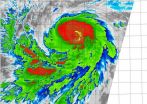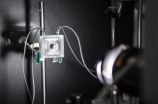ESC recommends DNA analysis in post mortems of young sudden death victims
2015-08-29
(Press-News.org) London, UK - 29 Aug 2015: ESC Guidelines published today recommend DNA analysis as a fundamental component of post mortem assessment in young sudden death victims. Identification of a genetic cause helps to quickly diagnose and protect relatives.
The Guidelines are published online in European Heart Journal1 and on the ESC Website2 and are the European update to the 2006 European/American guidelines.3 They focus on preventing sudden cardiac death in patients with ventricular arrhythmias.
"For the first time these guidelines have incorporated the concept proposed by several consensus documents that DNA analysis should be a fundamental component of post mortem assessment in young sudden death victims," said Professor Silvia Priori, Chairperson of the guidelines Task Force. "The molecular analysis helps to identify the presence of genetic diseases that can occur in a structurally normal heart and therefore cannot be identified during autopsy. Identification of a genetic cause as a substrate for a sudden death facilitates the early diagnosis of affected relatives and may help protect them through a personalised approach that spans from lifestyle modifications to the early use of therapies."
Another innovation is the introduction of "emerging recommendations" which are not yet supported by evidence strong enough for a Class I recommendation but which are highly promising. One example is the Class IIa recommendation, level of evidence C, that supports the use of the old antiarrhythmic drug flecainide in addition to beta-blockers for patients with a diagnosis of catecholaminergic polymorphic ventricular tachycardia who experience recurrent syncope or polymorphic/bidirectional VT while on beta-blockers and have risks/contraindications for an implantable cardioverter defibrillator (ICD).
"This new indication for an old drug is particularly relevant, as it provides an additional therapeutic option for patients with an 'orphan' disease with a limited number of available treatments," said Professor Priori.
With respect to new technologies, two Class IIb recommendations are introduced that cautiously inform the medical community about new treatment options that are still under investigation but could be used in select patients when alternatives are ineffective, unavailable or contraindicated. First, wearable cardioverter defibrillators may be considered for adult patients with poor left ventricular systolic function who are at risk of sudden arrhythmic death for a limited period and are not candidates for an ICD.4 Second, the subcutaneous ICD may be a useful alternative to a transvenous defibrillator when venous access is difficult, after the removal of a transvenous defibrillator due to infections, or in young patients with a long-term need for ICD therapy.
One of the most important recommendations is to identify patients with ischaemic heart disease who are at high risk of sudden cardiac death and may benefit from an ICD. An eight year follow-up of the MADIT II study found that patients with an ejection fraction below 30% and mild to moderate heart failure (NYHA class II and III) had a long-term improvement in survival with an ICD. ESC Guidelines published today recommend re-evaluation of left ventricular function at 6-12 weeks after myocardial infarction to assess the potential need for primary prevention ICD implantation.
"This recommendation is based on the fact that many patients with reduced ejection fraction early after a myocardial infarction will experience an improvement in their condition over time and therefore do not require the implantation of an ICD," said Professor Carina Blomström-Lundqvist, co-Chairperson. "Reassessment of ejection fraction is critical to ensure that all efforts are made to avoid unnecessary ICDs while at the same time identifying patients whose ejection fractions remain low even after medical therapy and who need an ICD."
Cardiac resynchronisation requires further study in a number of areas. "Its use in patients with atrial fibrillation has not been defined outside of observational datasets and there is a clear need for adequately powered randomised trials in this patient group," said Professor Blomström-Lundqvist. "Furthermore, whether the duration or the 'morphology' of the QRS complex is the most important predictive factor for response to therapy remains a challenging issue requiring more extensive investigations."
Professor Priori concluded: "The guidelines emphasise that early diagnosis of disorders that may predispose to sudden cardiac death can save lives. Screening in the general population may be expensive and not all experts support its use. But there is now a broad consensus that cascade screening should always be performed in families of affected individuals and in families with a history of sudden cardiac death in young people."
INFORMATION:
ELSE PRESS RELEASES FROM THIS DATE:
2015-08-29
Are some people immune to hangovers, and can eating or drinking water after heavy drinking prevent a hangover? The answers appear to be 'no' and 'no' according to new research presented the ECNP conference in Amsterdam.
Excessive alcohol consumption has familiar consequences, many of them quite damaging. If a person does not experience a hangover - and 25% to 30% of drinkers regularly claim this - they may be more likely to continue drinking, so good research into the outcomes of drinking to excess is needed.
A group of international researchers from the Netherlands ...
2015-08-28
Tropical Storm Erika was centered in the Eastern Caribbean Sea and affecting Puerto Rico and Hispaniola when NASA's Terra satellite passed overhead mid-day on Friday, August 28, 2015. Two hours after Terra passed, NOAA's GOES-East satellite saw Erika's western side over the Dominican Republic.
At 15:05 UTC (11:05 a.m. EDT) the Moderate Resolution Imaging Spectroradiometer instrument aboard NASA's Terra satellite captured a visible light image Tropical Storm Erika approaching Hispaniola. Erika's center was in the eastern Caribbean Sea, and the northern quadrant of the ...
2015-08-28
To understand how confidence in parenting may predict parenting behaviors in women who were abused as children, psychologists at the University of Rochester have found that mothers who experienced more types of maltreatment as children are more critical of their ability to parent successfully. Intervention programs for moms at-risk, therefore, should focus on bolstering mothers' self-confidence--not just teach parenting skills, the researchers said.
"We know that maltreated children can have really low self-esteem," said Louisa Michl, a doctoral student in the department ...
2015-08-28
A simple change in the wording of a traffic sign - from "Share the Road" to "Bicycles May Use Full Lane" - could help clarify the rules of the road for bicyclists and motorists, according to a North Carolina State University study.
"'Share the Road' signs are common but what that means in terms of how drivers and bicycle riders should interact can be ambiguous," says George Hess, natural resources professor and co-author of the study in PLOS One. Some bicyclists complain that motorists consider them to be in the way, while some motorists accuse bicyclists of hogging ...
2015-08-28
Consider the pendulum of a grandfather clock. If you forget to wind it, you will eventually find the pendulum at rest, unmoving. However, this simple observation is only valid at the level of classical physics--the laws and principles that appear to explain the physics of relatively large objects at human scale. However, quantum mechanics, the underlying physical rules that govern the fundamental behavior of matter and light at the atomic scale, state that nothing can quite be completely at rest.
For the first time, a team of Caltech researchers and collaborators has ...
2015-08-28
Washington DC - August 28, 2015 - Oysters not only transmit human norovirus; they also serve as a major reservoir for these pathogens, according to research published August 28 in Applied and Environmental Microbiology, a journal of the American Society for Microbiology. "More than 80 percent of human norovirus genotypes were detected in oyster samples or oyster-related outbreaks," said corresponding author Yongjie Wang, PhD.
"The results highlight oysters' important role in the persistence of norovirus in the environment, and its transmission to humans, and they demonstrate ...
2015-08-28
NASA-NOAA's Suomi NPP satellite flew over Hurricane Jimena in the Eastern Pacific and saw the strongest thunderstorms building up quickly, especially in the northern quadrant of the storm. Jimena intensified rapidly overnight on August 27 and early August 28 and the National Hurricane Center expects it to become a major hurricane.
The Visible Infrared Imaging Radiometer Suite or VIIRS instrument aboard the satellite provided infrared data of the storm that showed the coldest cloud top temperatures, which indicate the strongest thunderstorms were in Jimena's northern ...
2015-08-28
Generating and storing renewable energy, such as solar or wind power, is a key barrier to a clean-energy economy. When the Joint Center for Artificial Photosynthesis (JCAP) was established at Caltech and its partnering institutions in 2010, the U.S. Department of Energy (DOE) Energy Innovation Hub had one main goal: a cost-effective method of producing fuels using only sunlight, water, and carbon dioxide, mimicking the natural process of photosynthesis in plants and storing energy in the form of chemical fuels for use on demand. Over the past five years, researchers at ...
2015-08-28
If you think that performing CPR on a person whose heart has stopped is a surefire way to save their life, you may be watching too much TV.
The truth is more depressing than fiction, according to a new study by University of Southern California Davis School of Gerontology researchers. While medical dramas Grey's Anatomy and House show cardiopulmonary resuscitation saving a patient's life nearly 70 percent of the time, the real immediate survival rate is nearly half that - around 37 percent.
Researchers also found another discrepancy between reality and TV: Half of ...
2015-08-28
TAMPA, Fla. - Pancreatic cancer is the fourth most common cause of cancer-related death in the United States and has a 5-year survival rate of only 6 percent, which is the lowest rate of all types of cancer according to the American Cancer Society. This low survival rate is partially attributed to the difficulty in detecting pancreatic cancer at an early stage. According to a new 'proof of principle' study published in Aug. 27 issue of Cancer Prevention Research, Moffitt Cancer Center researchers hope to improve pancreatic cancer survival rates by identifying markers in ...
LAST 30 PRESS RELEASES:
[Press-News.org] ESC recommends DNA analysis in post mortems of young sudden death victims


